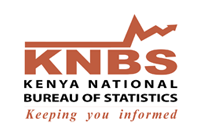Kenya National Bureau of Statistics (KNBS), has officially launched the Child Poverty Study in Kenya. The study will be carried by KNBS, in conjunction with UNICEF and Economic Policy Research Institute of South Africa (EPRI) have
The Study will generate child poverty evidence that will enable the government and stakeholders to track child poverty and their wellbeing. At the long run, this will help the Government formulate policies that will help realise the Sustainable Development Goals (SDGs).
 |
| (From left) KNBS Director General Zachary Mwangi, Mr. Saitoti Torome – Principal Secretary State Department of Planning and Statistics and Dr. Pirkko Heinonen UNICEF Kenya Representative |
Purpose/Issue
Sustainable Development Goals (SDGs)
No recent comprehensive child poverty estimates for national and county exist in Kenya to guide planning and budgeting for children’s investments. The current child poverty study is the first rigorous attempt to measure child poverty in its many dimensions. The conclusion of the study will also provide baseline child poverty estimates for SDG 1 target 1.2 (poverty in all its forms) and to some extent SDG 10 (inequality). The child poverty evidence generated by the study will enable Government and stakeholders to sytmaticlly track child poverty and wellbeing, as well as overall progress in realization of children’s rights in Kenya.
Background
The new Sustainable Development Goals (SDGs) agenda encourages countries to end poverty all forms of poverty for all men, women and children in a sustainable manner. To achieve that goal, countries are encouraged to increase their investment especially to the most vulnerable and marginalised.
 |
| Mr. Zachary Mwangi, Director General Kenya National Bureau of Statistics, giving his speech |
Kenya’s Constitution (Article 43 and 53) provides for a range of protections and rights for all children in Kenya, including the rights to health, water, housing, education, and protection. Kenya is also obligated through ratification of the CRC to ensure that these rights are realised by all children. While Poverty estimates for rural and urban areas are estimated at 50.3% and 33.5% these estimates have not given adeqaute attention and focus to child poverty and the multipple derpivations that are being faced by children. And while, several indicators of children’s development and rights are routinely monitored, including a range of nutrition and health related indicators, educational enrolment and completion, and access to other services, rigourous child poverty estimates for national and ocunty have not been estimated. It is against this background that the KNBS in collaboration with UNICEF have partnered to conduct a child poverty and deprivation analysis initially using the 2014 KDHS and later the KIHBS 2016. Such analysis is also necessary to provide evidence to not only infleunce policies, plans and budgets but also to support the monitoring of progress and the evaluation of programme interventions.
Progress so far
In early 2016 KNBS established a partnership with UNICEF to specifically conduct a comprehensive Child Poverty Study. UNICEF is providing both financial and technical support towards this study. In summary the execution of the child poverty study will be expected to deliver on the following:
• to assist Government of Kenya to define the baseline for the SDG 1;
• increase national knowledge about child poverty (in both dimensions of non-monetary and monetary) in Kenya;
• develop national capacity to measure child poverty and develop evidence based advocacy materials for national and county level,
 |
| Dr. Pirkko Heinonen UNICEF Kenya Representative and KNBS Director General Mr. Zachary Mwangi |
KNBS and UNICEF have engaged a technical institution by the name EPRI (Economic Policy Research Institute of South Africa) to conduct the study in collaboration with a technical working group comprised of KNBS officers and line ministry staff of Social Sectors. A steering reference group has also been established to supervise the analysis and guide the production of a report for disseminate.
The preliminary results of the analysis are now ready to be shared with stakeholders on the 10th June 2016. The validated final report is expected towards the end of October 2016.
Conclusion and Recommendation
In as far as KNBS is technically concerned the launch of the child poverty study will bring together key stakeholders who will provide insights on how best child poverty results should be presented, as well as utilized to improve child outcomes in Kenya. You presence to grace the occasion will not only signify our Governments commitment to the agenda on SDGs but also the fact that children are Kenya’s future and investing in their wellbeing is investing in the wellbeing being of this country.



 The Leading Economic Indicators highlights trends in Consumer Price Indices (CPI) and inflation, interest rates, exchange rates, international trade, agriculture, energy, manufacturing, building and construction, tourism and transport.
The Leading Economic Indicators highlights trends in Consumer Price Indices (CPI) and inflation, interest rates, exchange rates, international trade, agriculture, energy, manufacturing, building and construction, tourism and transport.